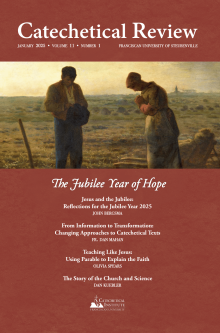 Christian writings between the apostolic age and the third century are extremely rare. At the turn of the first century AD, both Pope Clement of Rome and St. Ignatius of Antioch underscore the jurisdiction possessed by bishops over the forgiveness of sins. For most in those early years of Christianity, sin and repentance were simply accepted as a normal part of the average life of every Christian and needed no formulas or procedures to deal with it.
Christian writings between the apostolic age and the third century are extremely rare. At the turn of the first century AD, both Pope Clement of Rome and St. Ignatius of Antioch underscore the jurisdiction possessed by bishops over the forgiveness of sins. For most in those early years of Christianity, sin and repentance were simply accepted as a normal part of the average life of every Christian and needed no formulas or procedures to deal with it.
However, in the third and fourth centuries, the rise of certain heresies provoked a greater development and precision on doctrinal matters and practice. This certainly was the case in relation to sin and forgiveness. Approaching Confession became a definitively rigorous and public act. Led by the bishop, the entire Christian community would be involved as all prayed for the penitent.[1]
In the early Middle Ages, Irish missionary monks who came to the mainland brought with them a different form of the sacrament: private confession—that is, confession strictly between the penitent and God’s representative, the priest. Although the monks were certainly not lenient in the handing out of severe penances, they did effectively mollify the more terrifying features connected with public confessions.[2] In short, confessions were beginning to be practiced in generally the same way as they are today. However, though they had undergone significant changes in attitude and procedure, in essence the official canonical features of Confession remained: the honest recounting of one’s sins, the Church sitting in judgment in the person of the priest, the penalty administered, and final reconciliation.
This is not to be marveled at since the Church is as living and dynamic as is Christ himself. She is, after all, the extension of the risen, glorified Christ in space and time. Consequently, the Church has always been able to adapt herself to the special needs of the people of God at a particular time and circumstance. She has therefore periodically changed her approach to Confession—and can possibly change it again in the future.
The rest of this online article is available for current Guild members.
[1] J. D. Crichton, The Ministry of Reconciliation: A Commentary on the Order of Penance 1974 (Geoffrey Chapman, 1974), 21.
[2] Crichton, Ministry of Reconciliation, 21–22.
[3] Second Vatican Council, Sacrosanctum Concilium, no. 72.
[4] Pope Pius XII, Mystici Corporis, no. 88.
Art Credit: Confession in Kasait, Timor Leste, Br. Jeffrey Pioquinto, SJ, Flickr.com.
This article is from The Catechetical Review (Online Edition ISSN 2379-6324) and may be copied for catechetical purposes only. It may not be reprinted in another published work without the permission of The Catechetical Review by contacting [email protected]

















